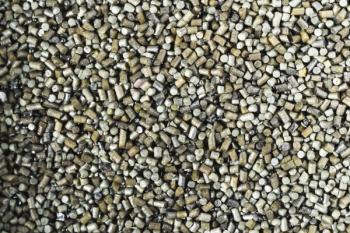
Exploring Artificial Intelligence in Analytical Chemistry
Given that artificial intelligence (AI) seems to be on everyone’s mind, it’s worth pausing to look at how AI works, and how it can fit into analytical chemistry.
Given that artificial intelligence (AI) seems to be on everyone’s mind, it’s worth pausing to look at how AI works, and how it can fit into analytical chemistry. AI and its subfield machine learning (ML) use signal processing and multiple layer artificial neural networks (ANNs) to model a single function, or set of functions, that have been ascribed historically to the intelligent activity of humans. Creating AI programs is a specialized skill and involves complex algorithms, data structures, and heuristic rules. AI programming must follow a rigorous set of rules to give valid or useful results, and each program must carefully be trained and validated using domain (or expert) knowledge to achieve the desired results. We note that deep learning (DL), is a subfield of machine learning where more complex artificial neural networks (ANNs) with more hidden-layers are used in the program structure.
The idea of artificial intelligence has intrigued scientists and laypeople alike since the 1950s, when Alan Turing explored the mathematical possibility of the concept in his 1950 paper, “Computing Machinery and Intelligence,” where he discussed how to not only build intelligent machines, but how to test their intelligence. From 1953 to 1957, Allen Newell helped develop Information Processing Language (IPL), and with Herbert Simon and John Shaw built the first AI programs, with names such as “Logic Theory Machine,” “General Problem Solver,” and “Logic Theorist.” They managed to program a machine to exhibit intelligence starting with a chess playing program and some elementary decision-making routines.
The concepts and development of AI rapidly progressed from the mid-1950s through the 1960s where the concept of deep learning was developed. The deep learning concept then became active in the 1970s and into the 1980s. Deep learning provided the first experiential learning software algorithm. Right about this time, analytical chemists began to seriously adopt the use of artificial neural networks (ANNs) to complete a variety of routine analysis tasks, including multivariate analysis for quantitative regression modeling and for classification modeling. Since the 1980s the use of AI tools has taken off rapidly and is now routinely applied to solving many types of chemical process and chemical analysis problems. AI is rapidly becoming mainstream in chemical applications.
All complex mathematical modeling activities that attempt to provide accurate decisions and predictions, from AI to chemometrics, face similar challenges, including limited data,
noisy data, undefined data limits, imperfect understanding of the theoretical basis for changes in the observed data, unexpected changes in the underlying data structures, and so forth.
For modeling activities involving chemometrics, it is at this point paramount that a chemist or chemical engineer be involved in interpreting a qualitative or quantitative model for any system involving known chemical principles or chemical reactions. It is important to keep in mind that domain knowledge, or a fundamental knowledge of the system one is working with, is essential to avoid major errors using any computer modeling system. That is why, if one is using AI to build a self-driving automobile, it would be very handy to have expert drivers involved during the modeling process. Without domain knowledge, one will undoubtedly see major errors in relying on models generated without such knowledge used as input information. Note also that any AI program output will differ based on its use of heuristics to limit the search space, and on the primary programming and the prime directive guidelines used. For more ideas about such a concept, perform a Google search for the Star Trek “prime directive,” or for Isaac Asimov's “Three Laws of Robotics.”
There are many uses in chemistry for AI and advanced chemometric methods for automating activities that are complex, but repetitive, as long as experts are involved to prove the computerized system is functioning properly. Potential uses for AI in analytical chemistry would be automating instrument calibration and diagnostics, optimizing instrument measurement conditions and parameters, creating experimental designs, completing repetitive signal preprocessing, making decisions for quantitative and qualitative calibration, library searching and classification work, and automating imaging and image enhancement functions. As one keen scientist has said, “…these new and excellent [AI] methods don’t actually replace the responsibility for you to actually know what you are doing.”
For a more complete discussion of AI concepts and chemistry—for yourself, colleagues, or students—see the article by Jerome Workman, Jr. and Howard Mark in February issue of Spectroscopy, at
Newsletter
Join the global community of analytical scientists who trust LCGC for insights on the latest techniques, trends, and expert solutions in chromatography.




